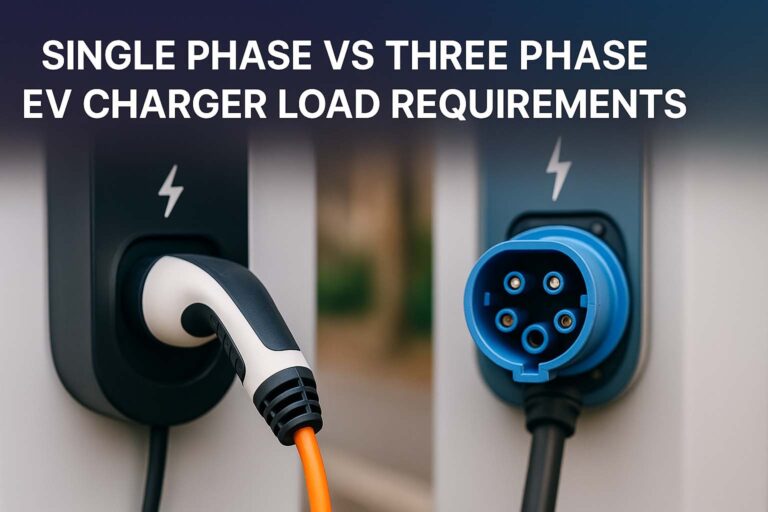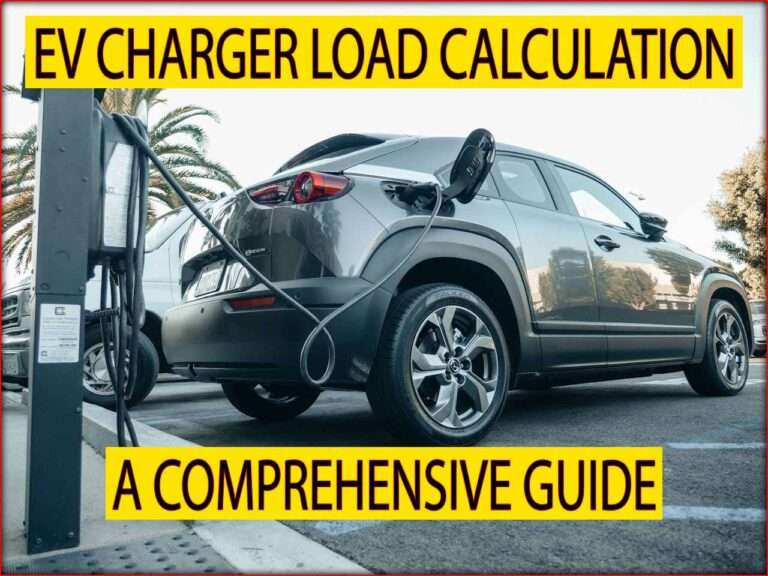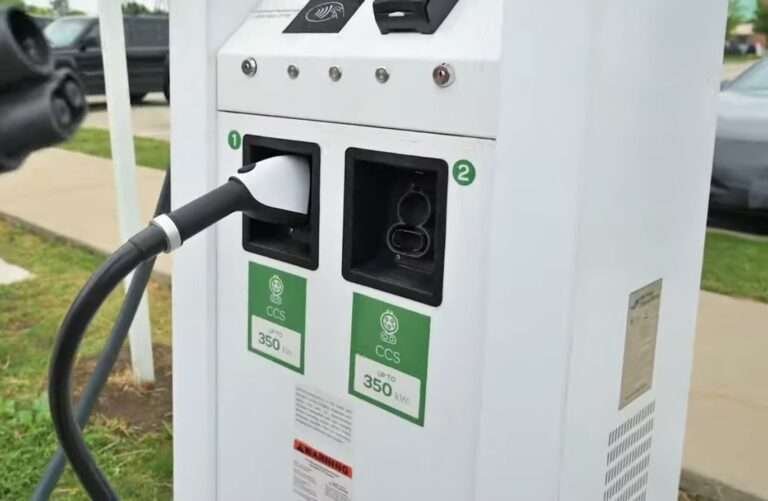Tax Credit for Business EV Charger Installation: 2025 Incentives & How to Qualify
Electric vehicles (EVs) are no longer a futuristic idea—they are part of today’s business landscape. Companies across the United States are adopting EV fleets, offering charging stations to employees, and adding chargers at customer-facing facilities. But installing commercial EV charging infrastructure requires significant investment. To support businesses making the shift, the federal government has introduced financial incentives. The most notable is the tax credit for business EV charger installation under Section 30C of the Internal Revenue Code.
This credit helps reduce the upfront cost of charging stations and makes clean transportation more accessible. For 2025, the rules have expanded and changed, making it vital for business owners to understand eligibility, the exact benefits, and how to claim them. Whether you run a small business or manage facilities for a large corporation, this tax credit can make a major difference in the total cost of your EV infrastructure project.
Table of Contents
Table of Contents

In this article, we’ll explore everything about the tax credit for business EV charger installation, including the 2025 updates, how much savings to expect, how to qualify, and how to claim the incentive. By the end, you’ll know if your business is eligible and what steps to take to maximize your savings.
Key Takeaways
- The tax credit for business EV charger installation can cover up to 30% of project costs, with limits.
- Eligibility depends on location, project type, and compliance with labor standards.
- Businesses can combine federal credits with state and utility incentives for maximum benefits.
- Applying correctly requires documentation and coordination with your tax professional.
Know more about JuiceBox vs ChargePoint Home Flex: 2025 In-Depth Comparison
What is the Tax Credit for Business EV Charger Installation?
The federal government introduced this incentive to encourage businesses to install electric vehicle supply equipment (EVSE). The tax credit for business EV charger installation was established under the Energy Policy Act and later modified by the Inflation Reduction Act (IRA). It allows eligible businesses to claim a credit on their federal taxes for part of the cost of buying and installing EV chargers.
For 2025, the credit continues but with expanded rules. Businesses can claim up to 30% of eligible project costs. However, there are specific requirements regarding where the charging stations are installed and how labor is handled. The goal is to ensure equitable access to charging infrastructure across the country, not just in major cities.
How Much Can Businesses Save?
The savings from the tax credit for business EV charger installation depend on the scale of your project and compliance with the updated rules. Below is a summary of potential savings:
| Category | Credit Percentage | Maximum Credit Limit | Notes |
|---|---|---|---|
| Businesses meeting wage & apprenticeship requirements | 30% | $100,000 per charger | Must be in eligible census tract |
| Businesses not meeting wage & apprenticeship requirements | 6% | $100,000 per charger | Reduced credit applies |
This means a business installing 10 compliant chargers could claim up to $1,000,000 in tax credits, significantly reducing project expenses.
Know more about Hardwired vs Plug In EV Charger: Which is Better for Your Home?
Eligibility Rules in 2025
The tax credit for business EV charger installation is not automatic. Businesses must meet certain requirements to qualify:
- Location Requirement – Starting in 2023 and continuing through 2032, the credit applies only if chargers are installed in low-income communities or non-urban census tracts. This rule ensures underserved areas benefit from EV infrastructure.
- Qualified Property – Only specific equipment qualifies. This includes Level 2 charging stations and DC fast chargers. Chargers must meet safety and regulatory standards.
- Labor Requirements – To receive the full 30% credit, businesses must comply with prevailing wage and apprenticeship requirements. If not, the credit drops to 6%.
- Placed in Service Timeline – The credit applies to projects installed and operational within the tax year.
Why Businesses Should Take Advantage of This Credit
The upfront cost of installing commercial EV chargers can be high. For example, a single DC fast charger can cost between $40,000 and $150,000 depending on power rating and site conditions. Even Level 2 chargers can range from $2,000 to $10,000 per unit. The tax credit for business EV charger installation directly reduces these costs, allowing companies to invest in clean infrastructure sooner.
Additionally, EV chargers can increase property value, attract eco-conscious customers, and support employees who drive electric vehicles. For fleets, installing chargers on-site also helps reduce fuel costs and carbon emissions.
How to Qualify for the Tax Credit for Business EV Charger Installation
To ensure eligibility, businesses should follow these steps:
Step 1: Check Location Eligibility
Use the IRS and Department of Energy (DOE) mapping tools to confirm if your property lies within a low-income or non-urban census tract. This is the first requirement for qualification.
Step 2: Choose Qualified Equipment
Make sure the charging stations you purchase are qualified alternative fuel vehicle refueling property. Most reputable manufacturers design their chargers to comply.
Know more about Single Phase vs Three Phase EV Charger Load Calculator
Step 3: Meet Labor Standards
If you want to maximize the 30% credit, hire contractors that pay prevailing wages and use registered apprentices for a portion of the work. Document compliance carefully.
Step 4: Place in Service by Deadline
The credit applies only to chargers installed and operational by the end of the tax year. Plan construction timelines accordingly.
Step 5: File IRS Form 8911
The official way to claim the tax credit for business EV charger installation is by filing IRS Form 8911 with your federal income tax return. Work with your tax advisor to ensure accuracy.
Example of Cost Savings for a Business
Let’s consider an example:
- A logistics company installs 5 DC fast chargers at a distribution center.
- The total project cost is $500,000.
- The site is located in an eligible non-urban census tract.
- Contractors are paid prevailing wages and include apprentices.
Calculation of Tax Credit:
- 30% of $500,000 = $150,000
- Maximum limit = $100,000 per charger × 5 = $500,000
- Actual credit = $150,000
This business reduces its tax liability by $150,000, cutting the effective project cost to $350,000.
Know more about How to Calculate Load for Multiple EV Chargers in Apartment Buildings
State and Utility Incentives on Top of Federal Credit
While the tax credit for business EV charger installation provides strong federal support, businesses can also layer additional incentives. Many states and utilities offer grants, rebates, or demand-charge reductions. For example:
| State/Program | Incentive Type | Example Amount |
|---|---|---|
| California (CALeVIP) | Rebate | Up to $80,000 per DC fast charger |
| New York (NYSERDA) | Grant | Up to $4,000 per Level 2 port |
| Utility Rebates (various states) | Cash incentive | $500–$20,000 depending on charger type |
Combining these programs with the federal tax credit can reduce installation costs dramatically.
Common Mistakes to Avoid When Claiming the Credit
Many businesses miss out on benefits due to avoidable mistakes. Be aware of these:
- Installing chargers outside of eligible census tracts.
- Not meeting labor compliance requirements, leading to a reduced credit.
- Failing to keep receipts and records of equipment and installation costs.
- Forgetting to file IRS Form 8911.
Being proactive in planning ensures you claim the maximum possible benefit.
Long-Term Outlook of EV Charger Tax Credits
The tax credit for business EV charger installation has been extended through 2032. This long timeline gives businesses the chance to plan phased installation projects. It also provides financial certainty for companies considering large EV fleet transitions.
However, eligibility rules could change if future legislation adjusts the program. That makes it important for businesses to take advantage of the current structure while it lasts.
Know more about 7kW EV Charger Cost: A Detailed Guide
Final Thoughts on Tax Credit for Business EV Charger Installation
The push for electric mobility is accelerating, and businesses that adapt early will benefit most. The tax credit for business EV charger installation is a powerful tool to offset costs and encourage the adoption of clean transportation solutions.
By understanding the 2025 eligibility rules, maximizing labor compliance, and stacking incentives, your business can reduce expenses significantly while supporting sustainability goals. Whether you are installing a few chargers for employees or building a full-scale charging hub for a fleet, the financial support is available now.
Follow Us on Social:
Subscribe our Newsletter on Electrical Insights to get the latest updates in Electrical Engineering.
#EVChargerTaxCredit, #BusinessEVCharging, #CleanEnergyIncentives, #EVInfrastructure, #ElectricVehicleTaxCredit, #EVChargerInstallation, #GreenBusinessSavings, #SustainableTransport, #EVIncentives2024, #CommercialEVCharging, #TaxCreditGuide, #EVChargingSolutions, #EVTaxBenefits, #EVChargerGrants, #BusinessSustainability



![Best EV Chargers for Hotels & Guest Accommodations [Commercial Grade] 4 Best EV Chargers for Hotels & Guest Accommodations [Commercial Grade]](https://azadtechhub.com/wp-content/uploads/2025/10/Best-EV-Chargers-for-Hotels-Guest-Accommodations-Commercial-Grade-768x512.jpg)


